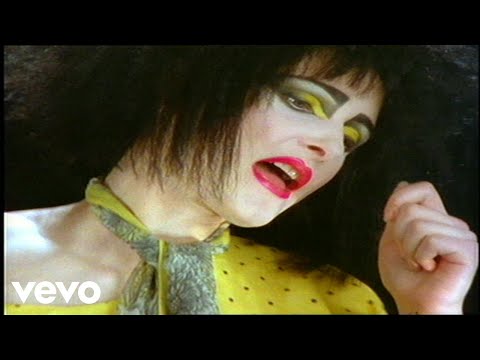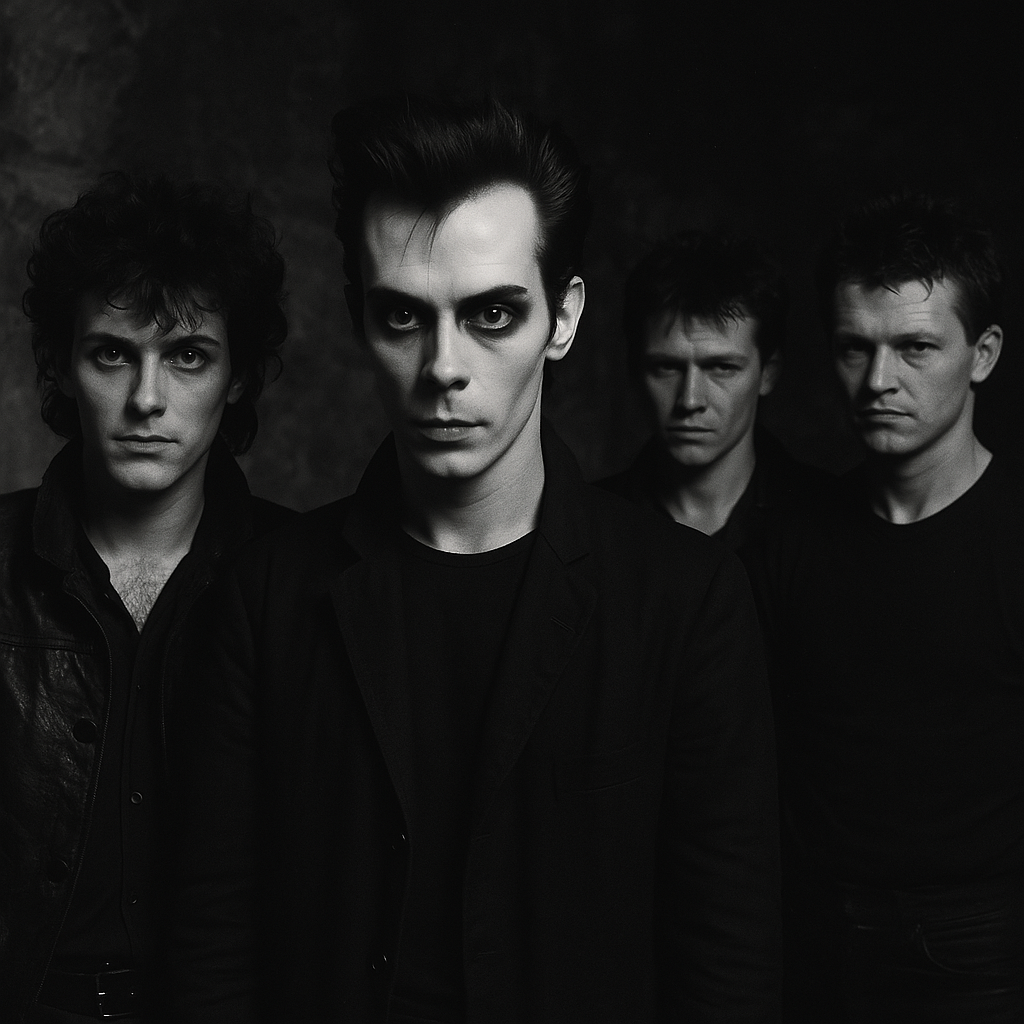Siouxsie and the Banshees: The Architects of Gothic Sound and Vision
Siouxsie and the Banshees, an enduring name in the world of post-punk and gothic rock, carved a unique path in the annals of music history. The band’s ability to weave together ethereal melodies, defiant rhythms, and themes of dark introspection has made them one of the most influential groups in the gothic subculture. With their signature sound, layered with atmospheric textures, and a captivating frontwoman in Siouxsie Sioux, the band’s legacy has shaped not only gothic rock but the broader landscape of alternative music. We explore the formation of Siouxsie and the Banshees, their discography, the influence they wielded on the goth scene, and the iconic imagery and persona they created that continues to captivate audiences worldwide.
Formation and Early Years
Siouxsie and the Banshees were formed in London in 1976 by vocalist Siouxsie Sioux and bassist Steven Severin. The band emerged from the burgeoning post-punk scene, which sought to break free from the constraints of traditional rock and punk music. However, Siouxsie and the Banshees stood out for their exploration of darker, more complex themes and a bold sense of theatricality that became integral to their identity.
Before forming the band, Siouxsie was already a prominent figure in the London punk scene, known for her provocative fashion and rebellious spirit. She initially gained attention as a member of the infamous Bromley Contingent, a group of devoted fans of the Sex Pistols, whose shared experiences and aesthetic choices became influential in shaping the early punk scene. Siouxsie’s vision, however, extended beyond punk’s raw aggression, as she began to incorporate art rock, experimental sounds, and haunting melodies into her music.
The band’s early lineup featured Siouxsie, bassist Steven Severin, McGeoch and drummer Kenny Morris, and their music quickly garnered attention with its ethereal yet intense sound. Their performances were often charged with an almost mystical energy, blending angst and beauty in ways few bands could emulate. Siouxsie’s iconic appearance—bold makeup, elaborate outfits, and a commanding stage presence—helped define the band’s visual identity and cement their place in goth subculture history.
Albums and Songs
The Banshees’ discography reflects their ongoing evolution, as they constantly pushed the boundaries of music and artistry. Each album encapsulates a different phase of their creative journey, from punk origins to the heights of atmospheric, gothic expression.
The Scream (1978)
Siouxsie and the Banshees’ debut album, The Scream, was released in 1978 and quickly became a touchstone for post-punk music. Produced by the band themselves, The Scream introduced the world to their unique sound, which was characterized by frenetic energy and atmospheric tension. The album blends jagged guitar work with a driving rhythm section, and Siouxsie’s voice, often reaching haunting high notes, ties everything together in an unforgettable fashion.
Tracks like “Hong Kong Garden,” with its infectious yet eerie melody, and “Overground,” with its mysterious and propulsive bassline, showcased the Banshees’ ability to infuse punk with a dark, avant-garde edge. The album’s themes, ranging from isolation and paranoia to urban decay, were aligned with the existential discontent of the post-punk era but with a distinct gothic flair.
Join Hands (1979)
Released in 1979, Join Hands marked the band’s first departure from their debut’s raw sound, incorporating more experimental and atmospheric elements. The album is brooding and layered, with more complex arrangements that enhance the gothic atmosphere. The band’s lyrics began to focus more heavily on themes of death, spirituality, and societal alienation, emphasizing a mood of desolation and introspection.
Tracks like “The Lords Prayer” with its haunting choral effects and “Playground Twist” display a shift towards a more haunting and theatrical style. The album cemented Siouxsie and the Banshees as pioneers of the gothic genre, as it blended the experimental nature of post-punk with the dark, brooding sound that would define goth rock.
Kaleidoscope (1980)
Siouxsie and the Banshees’ third album, Kaleidoscope, marked another important phase in their sound evolution, as it featured a more refined and eclectic style. With the addition of guitarist John McGeoch, the band found new sonic possibilities, incorporating jagged guitar lines and intricate rhythms that gave the album a swirling, kaleidoscopic feel—one that complemented the themes of obsession and identity explored in the lyrics.
Songs like “Christine,” with its dreamy atmosphere, and “Happy House,” which describes the internal chaos of societal pressure, illustrate the band’s ability to mix experimental sounds with haunting lyrics. The album is widely regarded as one of the band’s most defining works, blending elements of new wave, post-punk, and gothic rock in a groundbreaking way.
Juju (1981)
Released in 1981, Juju further solidified Siouxsie and the Banshees’ position as one of the premier bands in the emerging gothic scene. With McGeoch’s increasingly innovative guitar work and the band’s growing sense of artistry, Juju presented a more refined and haunting sound. The album is known for its dark, atmospheric textures, and Siouxsie’s vocal delivery is at its most potent, capturing both strength and vulnerability.
Standout tracks such as “Spellbound” and “Arabian Knights” introduced fans to a more mystical side of the band, with themes of spirituality, love, and sorcery dominating the lyrics. The album’s overall mood is one of tension, with its subtle interplay between dark beauty and despair.
A Kiss in the Dreamhouse (1982)
The 1982 album A Kiss in the Dreamhouse marked a new era for the Banshees, incorporating more lush, symphonic textures and a dreamlike quality that complemented Siouxsie’s ethereal vocals. The album’s atmosphere is one of surrealism, as the band explored themes of fantasy, decadence, and otherworldliness. The lush arrangements and haunting lyrics gave the album an opulent yet mysterious aura.
Songs like “Slowdive” and “Melt!” blend gothic moods with new wave experimentation, allowing the band to further push boundaries and refine their distinctive sound. A Kiss in the Dreamhouse demonstrated Siouxsie and the Banshees’ ability to capture the feeling of a dream—a strange, disorienting space where emotions collide with surreal beauty.
Tinderbox (1986)
By the time Tinderbox was released in 1986, Siouxsie and the Banshees had evolved into a more accessible but still distinctly atmospheric band. The album fused the gothic sounds of the past with more polished production, creating tracks like “Cities in Dust,” a dynamic, rhythmic anthem that still resonated with themes of decay and destruction.
While Tinderbox was more radio-friendly, its themes of societal decay and personal anguish continued to be central to the band’s ethos. The album encapsulates a moment where the band balanced commercial success with the darker, more experimental spirit that had defined their earlier work.
The Banshees’ Gothic Influence
Siouxsie and the Banshees are often credited as the progenitors of the goth rock genre. The combination of their eerie sound, atmospheric compositions, and Siouxsie Sioux’s otherworldly image provided the blueprint for the goth scene that would blossom in the 1980s. The band’s emphasis on mood, darkness, and introspection paved the way for future gothic artists to explore similar themes.
Their influence can be seen in the music of bands like Bauhaus, The Cure, and Sisters of Mercy, who took inspiration from the Banshees’ ability to combine post-punk’s raw energy with the haunting qualities of gothic rock. Siouxsie’s persona as a powerful, enigmatic frontwoman also influenced the role of women in gothic and alternative music scenes, encouraging bold, unflinching self-expression.
Legacy and Enduring Appeal
Siouxsie and the Banshees left behind a rich legacy that has influenced generations of musicians and listeners. The band’s ability to fuse post-punk’s rebellious energy with gothic rock’s somber elegance created a sound that remains timeless. Their music, with its balance of darkness and beauty, continues to captivate new generations, and their albums regularly appear on lists of the greatest albums of all time.
The band’s visual identity, characterized by Siouxsie’s striking style and makeup, has become a symbol of gothic fashion and rebellion. The Banshees’ artful exploration of dark themes—combined with their experimental approach to music—ensured that their influence would continue to resonate far beyond the goth subculture.
Siouxsie and the Banshees remain a cornerstone of gothic rock, their music and aesthetic shaping the evolution of alternative culture. Their dark, atmospheric sound, combined with Siouxsie Sioux’s commanding presence, solidified their place in musical history. While their music was never confined to one genre, their contributions to the gothic scene are immeasurable.
Through their innovative approach to music, their enduring influence on future generations of artists, and their exploration of the darker sides of human emotion, Siouxsie and the Banshees will forever be remembered as the architects of gothic rock. Their legacy is not just in their music but in the way they transformed the gothic subculture, providing a soundtrack to the lives of those who continue to seek meaning in the shadows.





Siouxman
“Siouxsie and the Banshees were formed in 1976 in London by Siouxsie Sioux (vocals) and guitarist John McGeoch”
Should read: formed in London in 1976 by vocalist Siouxsie Sioux and bass guitarist Steven Severin. McGeoch didn’t come into the band until later. Severin is the original Banshee
The Vamp Empire
Thank you for pointing that out! We appreciate your careful attention to detail. We’ve updated the post to reflect that Siouxsie and the Banshees were formed in London in 1976 by vocalist Siouxsie Sioux and bassist Steven Severin. Your contribution helps us maintain accuracy, and we’re grateful for your input.